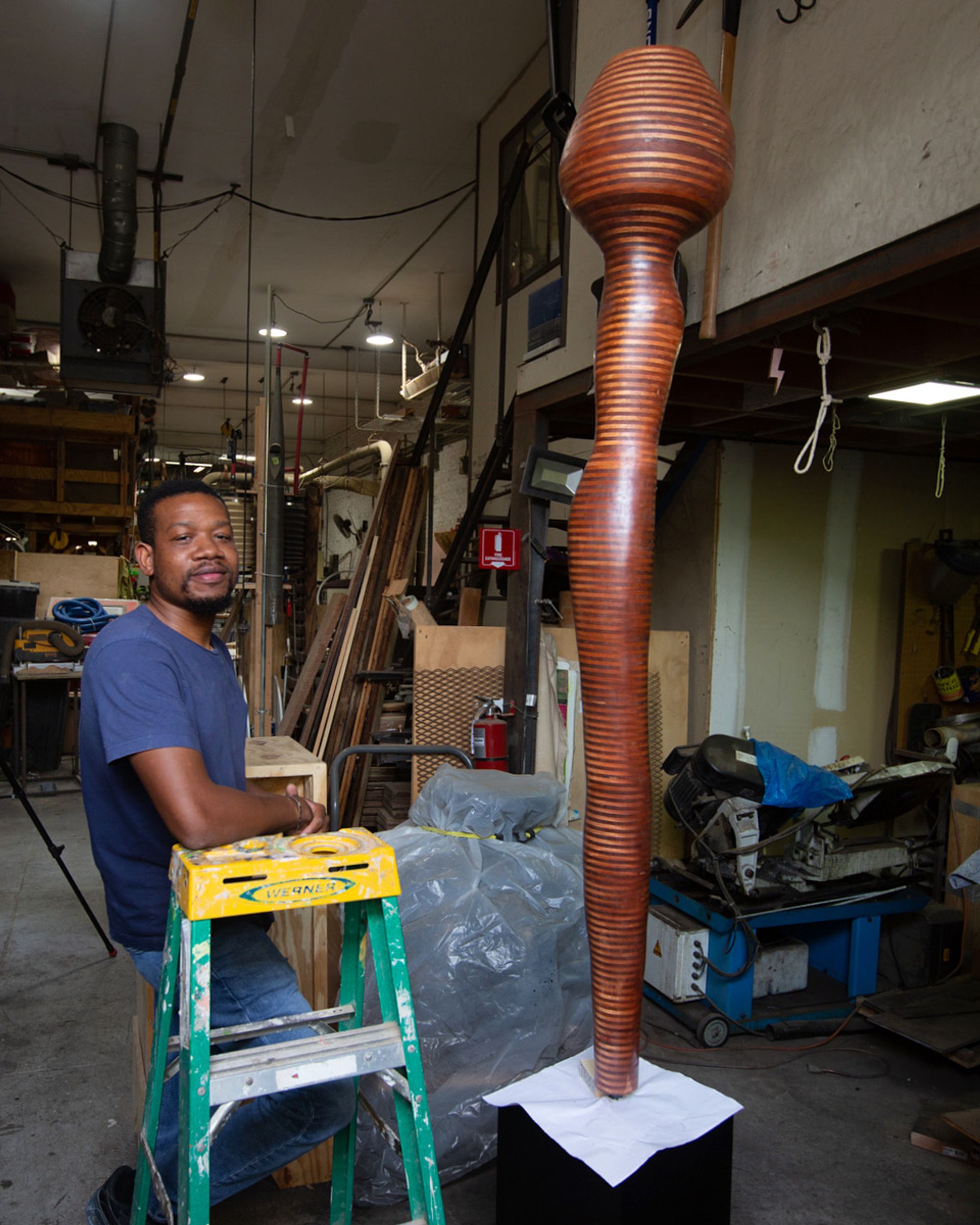
Robert Mallary and Jonathan Ojekunle: QUAD II
Artist Jonathan Ojekunle, a recent alum of Pioneer Works’s Visual Arts residency program, was invited by Mallary Media and Archive to replicate QUAD II, a sculpture created by the late artist Robert Mallary in 1968 as one of the world’s first computer generated artworks.
“A lifelong academic, in 1967 [Robert] Mallary became a professor in the art department at the University of Massachusetts at Amherst. With access to an IBM 1130 in the university computer lab, he was among the first to understand that computers would unlock the future of artistic potential. He shared this concept with his son Michael Mallary, an engineer, physicist, and MIT graduate, and together they used the computer to create a three-dimensional sculpture.
Together, Robert and Michael Mallary developed a Fortran computer program called TRAN2. From two contour profiles drawn by the artist, consisting of the X and Y coordinates, four points on ellipses were read off graph paper and transferred onto punch cards. According to Michael Mallary: ‘After reading the data cards, TRAN2 calculated hundreds of connected contour points (i.e. points on the slice perimeter) for each horizontal slice.’
What the program had calculated were the layers of the sculpture and “the plot for each layer was then glued to a sheet of plastic or wood and the slice perimeter was manually cut with a band saw. All of the slices were then stacked and bonded together.” The layers were then sanded and finished. Atop a wooden base, the resulting QUAD sculptures hint at a classical influence and the human form, while retaining a distinctive modern approach. Mallary had arrived at an early form of additive 3D printing.”
— Mason Whitehorn Powell
Mallary Media and Archive intends to work with artists like Ojekunle to share the artwork and vision of Mallary with a new generation. The short film “Recreating Mallary,” directed by Harvey Wang, is also presented to show the collaborative nature of Mallary Media projects.
About the Artists
Robert Mallary (1917-1997) was an American artist and professor of art and the Computer Graphics Workshop at UMass Amherst. Among the first computer artists in the United States, his career from 1967 until his death was dedicated to developing computer art practices and theory, included computer-generated sculpture, “plotter” drawings, digital manipulation/collage, and academic research. At the age of 20, Mallary had moved to Mexico City, Mexico to study at the Escuela de Las Artes Del Libro (1938-1939) with the Mexican Muralist Painters and Taller de Gráfica Popular print collective. Following work in advertising from 1945-1954, Mallary’s artistic career rapidly developed alongside numerous teaching appointments. His work has been represented in exhibitions and permanent collections including, MoMA, Whitney Museum of American Art, National Gallery of Art (D.C.), Tate Modern, Allan Stone Gallery, Mitchell Algus Gallery, the 1964 World’s Fair (installation), Empire State Plaza, Beverly Hills Hilton (mural), Cybernetic Serendipity at ICA London, and posthumously, at The Mayor Gallery and The Box LA. Mallary Media and Archive has represented the Mallary Estate since 2021 and is sharing his work through exhibits, media projects, and programming. For more information, please visit mallary.io.
Jonathan Ojekunle (b. 1993, Oyo State, Nigeria) is an interdisciplinary Nigerian artist based in New York. His practice encompasses a wide range of mediums including painting, sculpture, installation, and digital art. Ojekunle received his BFA from Obafemi Awolowo University, Ile ife, Osun Nigeria, and completed his MFA with a concentration in sculpture at CUNY Brooklyn College in 2022. A recent participant in the Visual Artist Residency program at Pioneer Works (2022), Quad II is his first exhibit in the United States. Commissioned by Mallary Media and Archive during his Pioneer Works residency, the artist spent eight months recreating Robert Mallary’s sculpture Quad II (1968) with modern technologies. Ojekunle’s creative process for the Quad edition was documented in the film Recreating Mallary (2023, Dir. Harvey Wang).